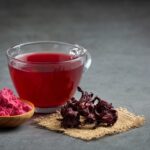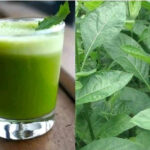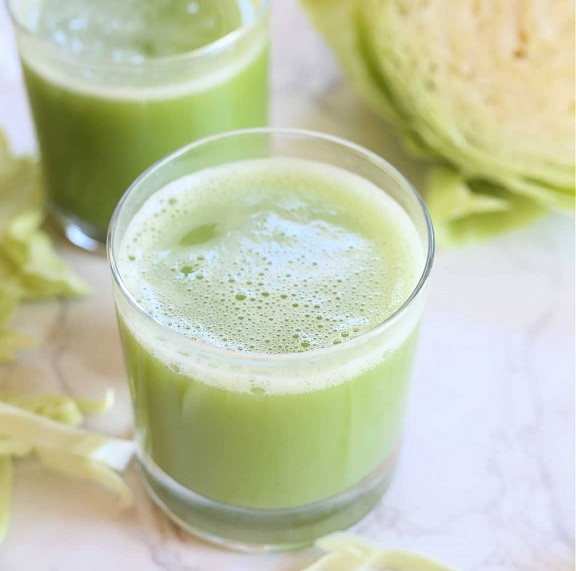
Cabbage juice could be the secret cure for your ulcer that you haven’t tried yet.
Three years ago, I suffered from a chronic stomach ulcer. Despite trying several treatment options, the pain persisted. Exhausted by the never-ending cycle of recurrence, I was skeptical when my niece, a medical student, recommended fresh cabbage juice.
I decided to try it in spite of my reservations. I started with taking a glass of cabbage juice daily for a week.
Gradually, I began to experience significant relief. The intense pains lessened, I could sleep without discomfort, and eating became enjoyable again. While not an instant fix, within a month, the difference was clear. The constant pain and burning were gone.
Went on to do some research and found helpful resources on the benefits of cabbage juice for ulcer healing.
In this article, we will explore everything you need to know about cabbage juice for ulcer healing. Most importantly, we will discuss important considerations to ensure you approach this natural remedy safely and effectively.
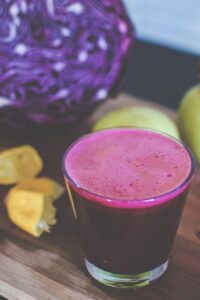
Imagine having abdominal pain that doesn’t go away, especially the ones that come in the morning, at night or in between meals.
Eating may become difficult, leading to indigestion, burning, or other discomforts. Sadly, this is the unpleasant reality of ulcer patients.
But the good news is that homemade remedies like cabbage juice are here to help you heal from your ulcer pains.

Cabbage, a member of the cruciferous vegetable family alongside broccoli and kale, might look very simple, but it’s a nutritional powerhouse. It’s packed with vitamins, minerals, and fibre, making it a staple in healthy diets worldwide.
But for ulcer healing, certain compounds within cabbage make it stand out. Its special combination of vitamin U, glutamine, sulforaphane, and potent antioxidants may help protect the stomach lining, lower inflammation, encourage cell repair, and even stop harmful H. pylori bacteria.
Cabbage juice is made from cabbage and contains a lot of vitamins and minerals, like vitamin C and K. Just like other ulcer foods, drinking it provides relief and helps with losing weight, improving intestinal health, lowering inflammation, balancing hormones, and getting rid of toxins in the body.
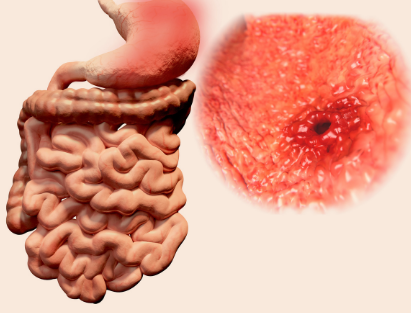
Peptic ulcers, also known as stomach ulcers, are painful sores that develop on the stomach or the small intestine’s lining. They can result in fatigue, heartburn, indigestion, and burning pain, and they affect millions of people globally.
Despite the effectiveness of conventional treatments like proton pump inhibitors (PPIs) and antibiotics, many people use dietary remedies such as cabbage juice as natural supplements and cures.
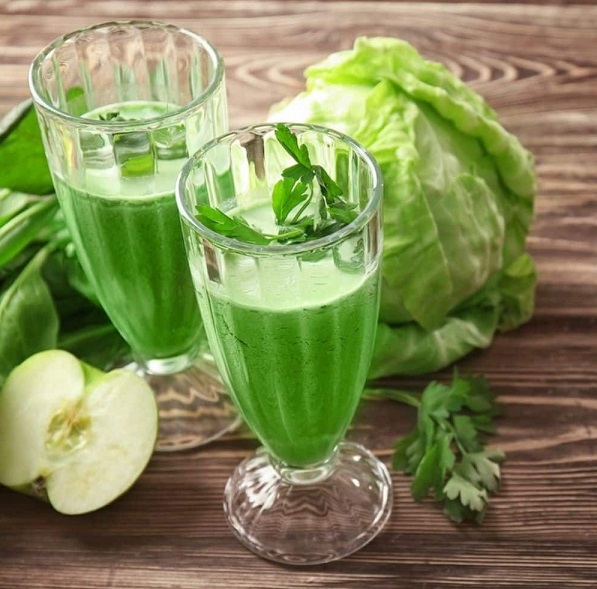
The use of cabbage juice to treat ulcers is not something new. It has its origins in traditional folk medicine. However, Dr. Garnett Cheney’s groundbreaking work in the 1940s brought it a great deal of scientific attention.
In his studies, Dr. Cheney used fresh cabbage juice to treat ulcers in thirteen (13) patients, and when compared to the traditional treatments of the time, he saw remarkably quick healing times. He named the factor responsible for these effects “Vitamin U. “Methylmethionine sulfonium chloride, or S-methylmethionine sulfonium, is its scientific name. But it was unknown at the time.
Similar findings were found in later research. In both studies, Dr. Cheney found that the healing time of stomach ulcers was considerably shortened by using cabbage juice or concentrated cabbage juice.
The result of a 2007 study revealed that white cabbage extract is the most effective way to prevent aspirin-induced peptic ulcers.
The effects of cabbage extract on rat stomach ulcers were examined in an animal study conducted in 2011. The rats were split up into two groups, and the researchers gave one group cabbage extract (CE) and the other group the medication “omeprazole,” which is the usual treatment for stomach ulcers in people. The cabbage extract, according to the researchers, inhibited the development of stomach ulcers in the rats.
The impact of extracts from garlic and cabbage on rat stomach ulcers was then examined in an animal study conducted in 2014. The results showed that extracts of both garlic and cabbage raised the pH of gastric juice, reducing its acidity.
Since the 1950’s, no other research has been done with a human model to confirm the efficacy of cabbage juice for ulcer healing. Hence, more human clinical trials are required to conclusively establish cabbage juice as a primary treatment for ulcers, even though the historical evidence and initial scientific findings are encouraging.
Nonetheless, the evidence currently available offers a strong case for its application as a natural, supportive supplement to modern medical treatment.
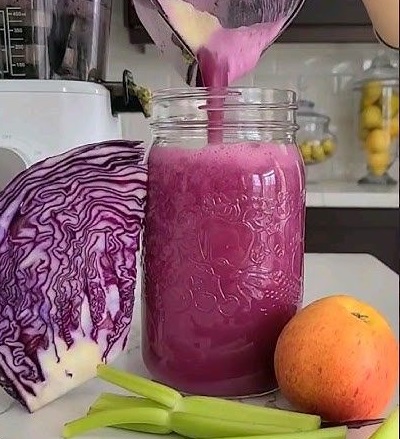
Cabbage juice offers amazing health benefits, some of which include:
The S-methylmethionine in cabbage juice helps the body make mucin, which is a key part of the protective mucus layer that protects the stomach lining from acid. Vitamin U helps to heal the existing ulcer by making this barrier stronger.
This stops further erosion. It also seems to help epithelial cells, which are the cells that make up the stomach lining, grow back and take part in the repair process. Think of it as putting down new, healthy bricks where the wall has fallen apart.
Basically, ulcers are sores that are inflamed. Cabbage has a lot of antioxidants, like vitamin C, as well as sulforaphane and isothiocyanates, which are very good at reducing inflammation.
Cabbage juice can help with pain and make the area around the ulcer more healing-friendly by reducing inflammation. When there is less inflammation, the damaged tissue heals faster and is less irritated.
Our bodies make free radicals, which can hurt cells by causing oxidative damage, especially when we are sick or stressed. Cabbage juice has a lot of antioxidants that help neutralise these harmful free radicals.
This protects the stomach lining from more damage and helps cells stay healthy while they heal. This protective action is very important for stopping the ulcer from getting worse and for helping the tissue heal quickly.
Cruciferous vegetables like cabbage contain sulforaphane, which may have antibacterial qualities against H. pylori. It is believed to prevent this bacterium, which is a major contributor to many peptic ulcers, from growing and colonising.
Although using cabbage juice to get rid of H. pylori won’t replace using prescribed antibiotics, it might make the bacteria’s environment less friendly, which would increase the efficacy of traditional treatments.
Even though it is less noticeable in juice form, cabbage’s fibre content still supports gut health in general. Cabbages also contain digestive enzymes.
The body’s capacity to heal and recover from ulcers is indirectly supported by a healthier digestive environment with balanced gut flora and effective nutrient absorption.
It’s more accurate to state that cabbage juice promotes the general balance and health of the gut lining rather than directly neutralising stomach acid like an antacid, despite some proponents suggesting an “alkalizing” effect.
Here’s how to make and use cabbage juice to promote ulcer healing:
Green cabbage is most frequently used for juice because of its mild flavour and high concentration of health-promoting compounds, even though all varieties of cabbage have health benefits.
Similar substances are also found in red cabbage, along with anthocyanins, which are potent antioxidants that give it its colour. If at all possible, choose organic cabbage to reduce your exposure to pesticides. Seek out fresh, firm heads with colourful leaves.
Dr. Cheney’s studies originally recommended consuming approximately one litre (about four cups) of fresh cabbage juice per day, divided into multiple doses; however, this can be too much for a beginner and may cause digestive discomfort.
Let’s be honest, not everyone enjoys the taste of raw cabbage juice. It can be quite strong and sulfurous. To make it more palatable:
Fresh is always preferable. The healthy substances, particularly Vitamin U, break down rapidly and are extremely sensitive to light and heat. After juicing, drink your cabbage juice right away. If you must store it, keep it in an airtight container in the refrigerator for no more than 24 hours.

In many different parts of the world, 80% of people use herbal medicine and home remedies to cure a range of ailments. However, there is still a need to seek medical guidance, especially if you have gastrointestinal issues or a thyroid condition.
KompleteCare offers you a medium to connect to medical professionals from the comfort of your home. Telemedicine uses telecommunication modalities to establish links between an individual and a healthcare professional.
Through telemedicine, healthcare professionals can recommend treatments, the prescription of medications, and provide lifestyle modification advice. Speak with a Doctor today.
Even though ulcer wounds can be painful, nature offers us many supportive companions. Cabbage juice is an all-natural home remedy for ulcer treatment can be taken alongside conventional medical treatment.
Although it’s not a cure-all or a stand-alone treatment, adding fresh cabbage juice into your daily routine, under your doctor’s supervision, may help your ulcer wounds feel more soothed and healed.
It is advised to drink it half an hour (30 minutes) before a meal for better bowel and digestion. Drinking it before bed may help you sleep better and feel less stressed.
The 1949 study that looked into how cabbage juice affected stomach ulcers found that they healed in roughly seven (7) days.
Even though cabbage juice has its benefits, it’s not always advisable to consume it on an empty stomach, particularly if you have a sensitive digestive system. It is recommended to introduce it gradually and seek medical advice if you have any concerns.
Cabbage juice may aid in the healing of stomach ulcers. Modern researchers have not yet used high-quality randomised controlled trials (RCTs) with human subjects to validate these findings, though. Aside self-testimonials, the effects of cabbage juice on stomach ulcers in humans, as well as the necessary dosages, are still unknown
With the right care, stomach ulcers, also known as peptic ulcers, can be cured. Most ulcers go away in a few months, especially if the underlying cause, such as an H. pylori infection or NSAID use is treated.
If you have a gastrointestinal issue, thyroid condition or are at risk for thyroid cancer, you may need to avoid cabbage juice. Increased gas, bloating, and pain may result from the sulphuric compounds in cabbage juice, which are its active ingredients. Consult a certified doctor if you have any health challenges before consuming cabbage juice for ulcer healing.
References
NutritionJuly 19, 2024
NutritionJuly 2, 2024
healthcareNovember 7, 2024
MedicationNovember 25, 2024
NutritionFebruary 5, 2025


